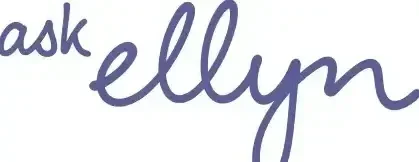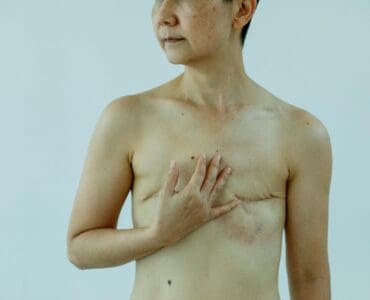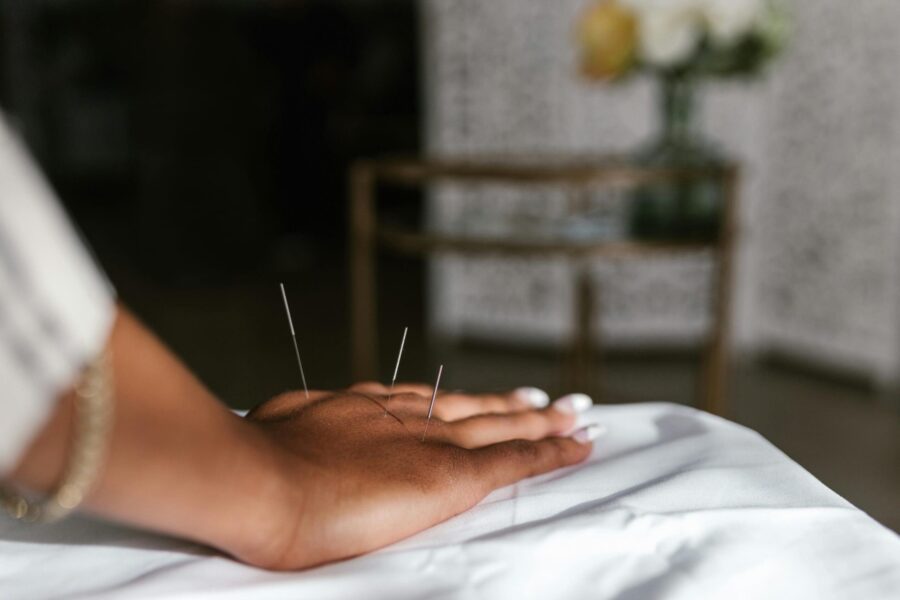Disclaimer: This content is not medical advice; always consult your doctor.
Facing a double mastectomy can feel overwhelming, emotional, and full of unknowns. This guide is here to help. It combines clear information, compassionate support, and personal storytelling, so you can navigate this process with greater confidence. Whether you’re preparing for surgery, recovering, or simply exploring options, you’re not alone.
What is a Double Mastectomy?
Different types of mastectomy
A double mastectomy is the removal of both breasts, often to treat or reduce the risk of breast cancer. Sometimes it’s recommended after diagnosis. Other times, women choose it preventively due to genetic risk factors like BRCA1 or BRCA2.
Unlike a single mastectomy (removing one breast), a double mastectomy means your entire chest is affected. This comes with unique physical and emotional adjustments.
- Total double mastectomy – removal of breast tissue and nipple.
- Skin-sparing mastectomy – keeps most breast skin for reconstruction.
- Nipple-sparing mastectomy – preserves nipple and areola in some cases.
Why Some Women Choose a Single Mastectomy Instead
While some women face a double mastectomy, others may opt to undergo a single mastectomy—the removal of just one breast. This choice depends on medical, emotional, and personal factors.
Here are some common reasons:
- Cancer location: If cancer is found in only one breast, doctors may recommend removing just that side.
- Lower risk on the other side: If genetic testing doesn’t show a high likelihood of cancer in the remaining breast, keeping it may be safe.
- Body balance and identity: Some women want to preserve one natural breast for body image, intimacy, or because they may wish to breast feed in the future.
- Surgical recovery: A single mastectomy can mean a shorter operation and recovery time than a double procedure.
- Reconstruction choices: Rebuilding one breast can, for some, feel less overwhelming than both, though matching symmetry is sometimes challenging.
The choice between a single mastectomy and a double mastectomy is deeply personal. It’s not just about cancer treatment but also quality of life, future risk, and emotional comfort.
Learning what option is right for you takes honest conversations with your medical team. Trusted sources like the American Cancer Society explain the differences.
For many, seeing mastectomy pictures (and in my case) mastectomy pictures no reconstruction online is a helpful way to prepare for outcomes. It’s important to remember every scar, chest, and healing path is unique.
👉 Related reading: The Ultimate Guide to the Butterfly Effect
What to Expect With Double Mastectomy Surgery
Surgery and Duration
A double mastectomy is performed under general anesthesia. The surgery takes between two and four hours, depending on complexity.
What Happens at the Hospital
- Hospital stay: Unless there are extraordinary complications, most mastectomies are now performed as day surgery.
- Sentinel node sampling: Your doctor will also use a dye to locate and then sample sentinel nodes on the cancerous side – this is to determine if there has been a metastasis of the cancer.
- Drains: Tubes may be placed to collect fluids and remain in place for typically one to two weeks.
Recovery
- Drain management: You will need to monitor the output of your drains and record the amount on a daily basis. If clots form in the drain tubes you will need to gently massage the tubes to break them up, something called “milking the drains.” You’ll also need to change the dressing around these drains regularly and keep them clean, as this is an open wound.
- Pain management: Pain, tightness, or numbness is normal. Your care team will prescribe medication.
- Mobility: Arm movement will be limited at first. Those in the know call them “t-rex” arms! Gentle stretching exercises prescribed by your care team will help restore the range of motion.
Preparation helps reduce anxiety. Pack soft, front-closing pyjamas, a pillow for comfort against seatbelts, and loose clothing.
Knowing what’s ahead can be grounding. The Mayo Clinic offers excellent detail on what surgery involves.
👉 Related reading: AI in Patient Care: Empowerment and Self-Advocacy
Recovery Time After a Double Mastectomy
Recovery looks different for everyone, and it can differ depending on whether you have immediate breast mound reconstruction, which is a more involved procedure. But here are typical timelines:
The first few weeks at home
- First week: Fatigue, pain, and drains. Movement is slow.
Two to three weeks: Most stitches are dissolving. Drains are removed. Walking and movement become easier.
Regaining strength and mobility
- Four to six weeks: Many people are able to return to work, light activity, or driving.
- Three months: Most swelling and bruising improve.
- Six months to a year: Numbness and emotional healing continue.
Emotional and physical recovery
Your body has gone through significant trauma. Rest and patience are essential. Remember that you are not just healing on the outside, but on the inside as well. Make sure to consult with your surgeon and get their clearance. You will typically have a follow-up appointment 3-4 weeks post-surgery where they will examine your incisions and review your pathology report.
Emotional recovery is just as important. Many women feel grief, relief, or both. Talking to others helps. Survivorship networks, like Breastcancer.org, provide compassionate guidance.
👉 Related reading: Empathetic Witness in Cancer
My Story
Facing the decision
When I first heard the words “double mastectomy,” my world shifted. I knew this surgery was necessary, but I wasn’t ready.
For me, the decision landed after many sleepless nights and endless research. I was told initially a lumpectomy wasn’t possible, and given the number and size of my tumors, a mastectomy became not just the best option for me—it was the only option that felt survivable, even if the idea of losing both breasts was terrifying. The day I actually signed the surgical consent form, I cried all the way home. It felt both monumental and numbing at the same time.
My choice for a double mastectomy and for aesthetic flat closure
I was fortunate to have a surgeon, Dr. Dan, who truly listened to what mattered to me. After a lot of back and forth—even a 3 am email where I laid out my “business case” for going flat instead of one-sided (which is often the standard in Ontario, where I live)—I ended up with a double mastectomy and what’s called aesthetic flat closure. That means I chose not to have breast reconstruction or implants. For me, the idea of a one-and-done surgery, not dragging my body through multiple operations and hospital stays when I just wanted to heal and move forward, was so important. I also wanted to keep my functional strength and avoid losing muscle from my back or belly, which many types of reconstruction require.
The surgery itself was a blur. I was incredibly anxious about going under anesthesia for the first time in my life, but by the time I woke up, it was already behind me. I remember being honestly relieved. I felt lighter—physically and emotionally—because anticipation is always so much worse than the actual doing. I went into surgery at 2 pm, and was home in our family room by 7:30 pm. Yes, there was pain, but for me, it wasn’t as bad as I feared. Tylenol and Advil were enough, and my drains were out in under a week.
Looking in the mirror for the first time
Seeing my flat chest for the first time was surreal, but not as traumatic as I had expected —maybe because I’d looked at so many mastectomy pictures no reconstruction. I actually surprised myself by feeling empowered: “Damn, Dr. Dan did an incredible job,” I said to my friends. There’s certainly an adjustment, but I haven’t once regretted going flat. That flatness is a visible reminder that I fought for my life and made choices I could live with.
Recovery wasn’t a cake walk. The drains tugged. I had to sleep upright in a recliner for a few nights. I definitely had to work around range of motion issues, and dressing myself wasn’t easy at first. I wore a surgical cami nonstop and button-up front closure tops were a godsend.
Learning to live flat
It took time, but I began to embrace my new body. I learned about clothing, products, and ways to move through the world with confidence.
Sharing my journey through AskEllyn has been healing. If you’re walking this road, I want you to know—you are not alone.
👉 Related reading: Why I Founded a Swimsuit for Post-Mastectomy Brand
Products to Consider After a Double Mastectomy
Healing doesn’t stop when you leave the hospital. Practical products help you manage comfort, dignity, and style.
Clothing Options
- Single mastectomy clothing: For women with only one breast removed, tailored clothing or specialized bras balance comfort and style.
- Mastectomy casual wear: Soft fabrics, front-closure tops, and no underwire designs make daily dressing easier.
- Adaptive fashion: Look for lounge wear and pajamas with built-in pockets to hold drains and loose fits for sensitive skin.
👉 Related reading: The Ultimate Guide to Fashion for Women with a Single Mastectomy
👉 Related reading: Kickit Pajamas: Comfort After Breast Surgery
Swimwear
Many women ask about post-mastectomy bathing suits and post-mastectomy bikinis. These options help restore confidence in water settings.
For those who feel self-conscious:
- One-piece post mastectomy bathing suits: With built-in pockets for prosthetics or foobs.
- Post mastectomy bikini: Higher necklines, wider bands, and supportive fabric keep you comfortable.
For those who don’t:
- Wear whatever the heck you want proudly and without shame.
👉 Related reading: Swimwear for Post Mastectomy
Recovery Helpers
- Pillows and seatbelt protectors: Comfort while travelling home from the hospital and for sleeping.
- Drain holders and lanyards: Keep drains secure during showers.
- Scar care products: Creams, gels, or silicone strips may help.
Inspiration
The National Cancer Institute shares resources for treatment and recovery. Community forums are also supportive places to connect with others.
Mastectomy Pictures No Reconstruction
Seeing real images can help
For many women, seeing what bodies look like after a double or single mastectomy is powerful. Mastectomy pictures no reconstruction can bring reassurance.
These images show strength, scars, and real healing. They can help normalize your own experience. They also spark conversations about choice. Some women reconstruct. Others proudly live flat.
Movements like the Flat Movement and Project Still Me celebrate these decisions. They remind us that there is no “right” way forward—only your way.
Possible Complications After a Double Mastectomy
Every surgery comes with risks. Knowing potential complications helps you recognize warning signs and seek support early.
Short-Term Complications
- Infection: Redness, fever, or discharge at the incision site may signal infection.
- Fluid buildup (seroma): Clear fluid may collect under the skin. Often it drains naturally, but sometimes needs medical help.
- Bleeding: Small amounts are common, but heavy or persistent bleeding requires urgent care.
- Poor wound healing: Sometimes incisions heal slowly, especially if you’ve had prior radiation.
- I am not a doctor and cannot offer medical advice. If you experience any of the above, please call your surgeon’s office.
Long-Term or Ongoing Effects
- Numbness or tingling: Nerves cut during surgery may cause lasting changes. I still can’t feel my left armpit, which makes shaving interesting!
- Phantom breast sensations: Some women feel itching, pain, or pressure in the absent breast area.
- Lymphedema: Swelling of the arm or chest can occur if lymph nodes are removed.
- Scar tissue tightness: Scar bands may limit arm movement or flexibility. This is often referred to as Iron Bra.
Emotional Complications
Physical risks are only part of the story. Many women face grief, anxiety, or depression after surgery. What you have experienced is trauma, and these feelings are normal, but deserve care and attention.
If you experience persistent sadness, difficulty coping, or body image distress, counselling or support groups can help. The National Cancer Institute has resources on emotional recovery and survivorship.
Clothing and Style After a Double Mastectomy
Fashion can feel daunting after surgery. Your body has changed, but let me assure you, fashionable style remains possible.
Mastectomy Casual Wear
This is mostly true of the initial days after surgery when you are still healing, the scars are fresh, and you have a limited range of motion.
- Soft cardigans, button-downs, loose t-shirts, bamboo camis.
- Scarves and wraps for warmth or coverage.
- Comfortable bras or going braless if you prefer. That said, your surgeon will likely want you to wear a compression sports bra for the first two weeks to manage swelling and to reduce the risk of a seroma.
Single Mastectomy Clothing
If you’ve had one breast removed, you may want balance in your silhouette. Specialized clothing and prosthetics provide options.
Post Mastectomy Bathing Suits and Bikinis
Finding swimwear after surgery is empowering. Look for suits with adjustable straps, built-in pockets, and supportive structure.
The Dana-Farber Cancer Institute offers additional style and recovery advice.
Final Thoughts
A double mastectomy changes your body, but it doesn’t change who you are. Healing is physical, emotional, and deeply personal.
Expect surgery to take time. Expect recovery to test you. Expect emotions to shift. And know that joy, confidence, and comfort can return.
Whether you wear single mastectomy clothing, mastectomy casual wear, or post-mastectomy bikinis, you deserve to feel at ease in your body.
If you’re preparing for double mastectomy surgery, remember—you don’t walk this path alone. Resources, stories, and supportive products are here to help. And of course, AskEllyn is always here to hold your hand.
👉 Related reading: AI Companions for Breast Cancer




